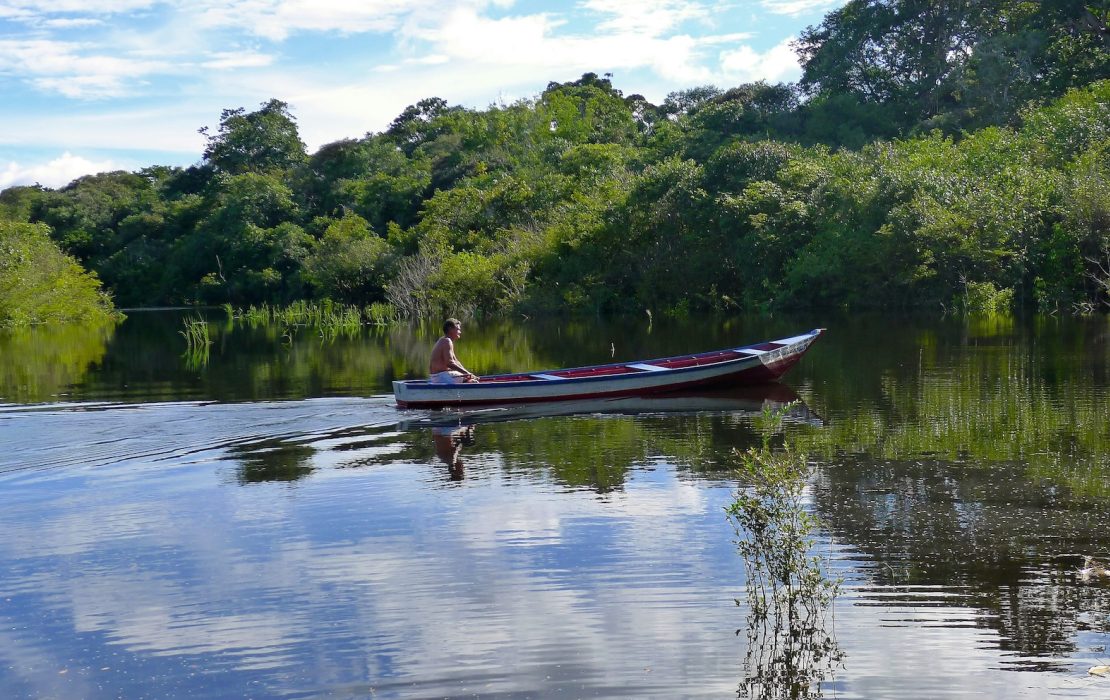
Photo: Neil Palmer / CIAT
This piece was originally published on UNDP.org
We can only transition to zero-carbon and climate resilient development to the extent that we transform our societies. One of the areas in which this transformation is most needed is gender equality and women’s empowerment. It may be surprising to hear, but without women at the centre of climate action, the world cannot achieve its mitigation and resilience goals.
Women play a substantial role in key climate sectors such as in agriculture, energy and forest. Nearly one third of women’s employment globally is in agriculture, including forestry and fishing. There is ample evidence of a positive relationship between women’s participation in forest management decisions and enhanced forest management outcomes, too: when women have rights to own and secure access to land, this improves productivity, increases food security and reduces land degradation.
Yet across the globe, persistent structural inequalities deny women income, legal rights, and access to resources, decision-making roles and political participation, while assigning them to the primary unpaid role for care of their families.
At UNDP’s Climate Promise, we believe that climate action provides an unprecedented opportunity to unlock massive economic and social benefits that can help us achieve the Sustainable Development Goals. We also think the nationally determined contributions (NDCs) process, countries’ climate commitments under the Paris Agreement, offers a unique chance to integrate gender-responsive measures at scale. That’s why we have developed a mutually reinforcing, three-pronged approach: effective governance, inclusive planning, and integrated policy frameworks. Working with this structure allows us to ensure gender is at the core of national climate plans, in NDCs design and implementation across the globe.
A newly released UNDP brief, Advancing gender equality in national climate plans: Progress and higher ambitions, reveals promising results so far: It shows that as of March 2022, 90 of 94 Climate Promise countries (96 percent) that submitted NDCs in the last two years integrated gender equality considerations – almost double the number of countries to do so in 2015. This progress reflects an increasing understanding of the importance of gender integration in the second generation of NDCs as a way to increase the ambition and effectiveness of climate action.
When looking at effective governance for gender mainstreaming, we can see a similar positive trend. Twenty-four percent of NDCs mention national gender institutions (a mechanism for the advancement of women) as part of climate change governance structures, while 27 percent of countries recognize the full, genuine and equal participation of women in decision-making around climate action in their NDCs. This compares to just 2 percent of countries in 2015 in both cases.
In addition, 22 percent of Climate Promise countries mentioned the key role of women’s groups or civil society organizations in their NDCs. This compares to just one percent in 2015.

Photo: Kimheang Tuon / UNDP Cambodia
Photo: Dmitry Motinov / UNDP Kyrgyz Republic
When preparing national climate action plans, it’s important that consultations include as many parts of society as possible. UNDP does a lot of work supporting governments to ensure these processes are inclusive. In the last two years alone, 37 countries supported by UNDP engaged in a multi-stakeholder, consultative or inclusive approach that included gender considerations during their NDC revision process. This compares to just two countries that underwent this process in 2015.
The new brief also shows that 53 countries have included actions to promote women’s empowerment in their revised NDCs. This is up from just seven countries in 2015. Forty-two countries committed to increasing women’s access to resources and training and skills in their revised NDCs, up from just one country in 2015.
This isn’t just a story of growing numbers though; the numbers are a sign of real progress. The meaningful participation of women in future NDC revision cycles and implementation requires removing barriers and putting capacity building processes in place because we know that in the countries where women are empowered to enter these spaces, we will have stronger plans with real gender considerations.
Still, drawbacks exist and there is room for much growth. One of the main bottlenecks in many countries– even if capacities are in place, even when data has been collected and analysed, and when gender-sensitive sectoral analyses have been conducted – is ensuring that planned gender actions are budgeted for and implemented on the ground. Although there has been a significant improvement in the second generation of NDCs in regard to climate finance, funding of gender-related climate initiatives remains an important area for growth in revised NDCs. The new data show only 21 countries mentioned gender in relation to climate finance strategies; 20 countries highlighted the importance of women’s access to finance for climate action; and only 15 countries mentioned gender-sensitive budgets as part of gender-climate action.
As we move towards NDC implementation and wrap up this year’s 66th Session of the Commission on the Status of Women (CSW66), we must work towards a continued commitment to and support of achieving gender-responsive climate solutions that address structural inequalities, put women’s and girls’ leadership and agency front and centre, and advance equal rights, access to technology, finance and markets in building resilience and pursuing a just transition to a green economy.
This is our time to do things differently to ensure we move the world's climate action trajectory from pledge to impact.


